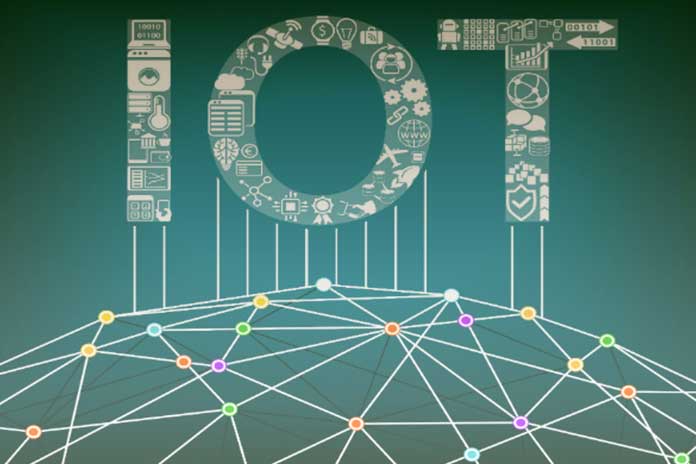The networking of various devices presents more and more companies with the challenge of choosing the right IoT platform. In a few – but targeted – steps, it is possible to define the requirements for an IoT solution and thus to find a suitable product. IoT platforms are the backbone of scalable IoT applications and services. They enable small and medium-sized industrial companies to develop and offer such applications and services.
IoT platforms are the backbone of scalable IoT applications and services. They also enable small and medium-sized industrial companies to develop and offer such applications and services. When choosing an IoT platform, however, companies face three main challenges:
Today, companies can choose from a vast number of IoT platforms for the implementation of IoT applications and services;
Choosing an IoT platform is about nothing less than making a highly strategic decision about your vertical integration – “make or buy”;
Choosing an IoT platform is complicated and complex, and no IoT platform on the market is “perfect.”
While the term IoT platform was just a buzzword a few years ago, today, companies have to choose between more than 450 real IoT platforms. It is expected that this number will continue to rise because numerous other providers are trying to participate in this growing market from different starting positions. This includes IT-based “hyperscalers” and industry-specific providers, start-ups, and TelCos. In 2021, IoT platform revenue was estimated at $1700 million. At the same time, the results of an ongoing mm1 study on the subject indicate that hardly any user company has an overview of even a tiny fraction of what is on offer on the market.
Also Read: How The IoT Is Changing The Corporate World
Highly Strategic Decision On Your Vertical Integration
This initial situation is critical against the background that selecting an IoT platform is about nothing less than the highly strategic decision on one’s own added value – “make or buy.” To offer a connected product range such as the much-cited connected refrigerator, crucial tasks must be carried out at every level of the IoT stack: things & device management, connectivity & communication, data, information, and use cases. IoT platforms promise to take over and largely automate various tasks at various levels.
In this respect, the decision for a specific IoT platform goes hand in hand with the decision for a particular vertical integration, or, in other words, for “make or buy” on the various levels of the IoT stack. Pioneer companies such as Caterpillar and Sennheiser go even further and see IoT platforms in connection with the decision on the breadth of value creation, especially in a servitization strategy. The strategically highly relevant selection of an IoT platform, as described, is complicated and complex.
Because the differences in the offered IoT platforms are manifold, for example, in the technical orientation, the provided functions, the supported technologies, the scalability, and the pricing. To make matters worse, the providers’ marketing materials are often far ahead of the platforms’ level of development. And so it happens that many companies realize in the middle of the platform implementation that the technologies central to their project are not sufficiently supported, the platform costs are exploding, or they have carelessly passed on competition-critical data to a platform provider.
Such a wrong decision has already caused many projects to fail and necessitates a time-consuming platform change – additional costs in the six to seven-digit range and months of delays in the “time to market” are the result. In practice, therefore, a careful platform evaluation based on 60 to 80 critical parameters and a systematic individual requirements analysis has proven itself, which should be carried out with experienced, independent experts.
With The mm1 Method And Toolset To The Right IoT Platform
The strategic decision-making range, different application scenarios, and specific requirements require an individual approach when selecting the appropriate IoT platform. mm1 proposes a three-step procedure for this, characterized by the embedding of the selection decision in the overall IoT strategy and the cooperation of all functions.
In the first step, the target image for the IoT market entry is defined. This involves the cross-functional (product management, finance, IT, CDO, …) development of a use case roadmap and definition of the planned vertical integration. Based on this, criteria for the platform selection are defined (functional, commercial, operational).
In step two, the platform pre-selection is made (Longlist>Shortlist); Then selection criteria are weighted, again across functions, and IoT solution scenarios are created.
The latter are specified in step three for each platform in question (costs, feature coverage, etc.). Finally, the final, cross-functional media evaluation from the shortlist follows the previously developed selection criteria.
An integrated toolset supports the entire procedure. This allows companies to formulate their requirements for an IoT solution and select a suitable product in just a few targeted steps.
Conclusion: An Individual Approach To The Selection Is A Must
When choosing an IoT platform, companies face three main challenges: First, they can now choose from a vast number of over 450 IoT platforms to implement IoT applications and services. Secondly, selecting an IoT platform is about nothing less than the highly strategic decision on your depth of added value – “make or buy.” Third, choosing an IoT platform is complicated and complex, and no IoT platform on the market is “perfect.” The strategic decision-making range, different application scenarios, and specific requirements require an individual approach when selecting the appropriate IoT platform.
Also Read: Key Predictions For Upcoming IoT And Mobile Application Integrations



